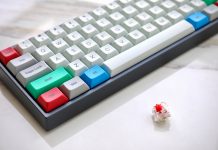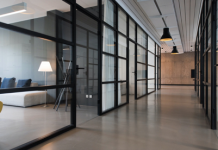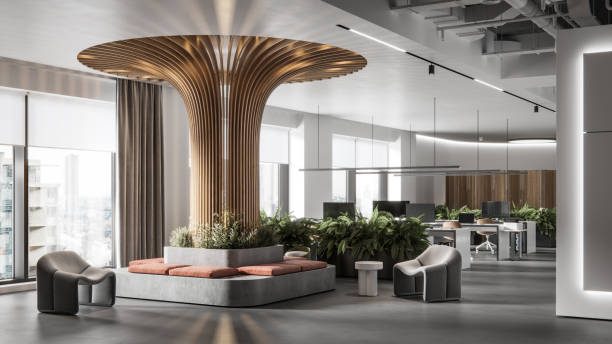Interior design plays a crucial role in shaping the atmosphere, aesthetics, and functionality of our homes. It goes beyond mere decoration, encompassing the thoughtful arrangement of furniture, selection of colors, textures, lighting, and the integration of various design elements. In this article, we will explore the remarkable benefits of interior designers for homes, highlighting how they can transform spaces into personalized havens that enhance our well-being and enrich our daily lives.
Interior Design for Homes
-
Reflects Personal Style and Identity:
One of the significant benefits of interior design is the ability to reflect and express our personal style and identity within our homes. It provides an opportunity to curate a living space that resonates with our tastes, preferences, and values. Through careful selection of furniture, accessories, colors, and artwork, we can create an environment that truly feels like our own.
-
Enhances Functionality and Optimal Space Utilization:
The interior design maximizes the functionality and optimal utilization of available space. Professional designers possess the expertise to assess the layout and flow of a home, determining the best placement of furniture, fixtures, and storage solutions.
By optimizing the spatial arrangement, interior design can improve traffic flow, increase storage capacity, and ensure that each room serves its intended purpose.
-
Boosts Mood and Well-being:
Well-designed interiors have a profound impact on our mood and overall well-being. Thoughtfully chosen colors, lighting, and textures can create a harmonious and inviting atmosphere that promotes relaxation and comfort.
Integrating elements of nature, such as indoor plants and natural materials, brings a sense of tranquility and connection to the outdoors. A well-designed home can serve as a sanctuary, providing a retreat from the outside world and positively impacting our mental and emotional state.
-
Enhances Productivity and Efficiency:
Incorporating elements of efficient design can greatly enhance productivity and efficiency within our homes. A well-organized and clutter-free environment promotes focus and reduces distractions, enabling us to accomplish tasks more effectively. Strategic placement of workstations, proper lighting, and ergonomic furniture contribute to a comfortable and conducive work or study environment.
-
Increases Property Value:
Investing in interior design can significantly increase the value of a property. Well-designed and aesthetically pleasing homes have higher market appeal and attract potential buyers or renters. Whether it’s a complete renovation or thoughtful updates to key areas, a professionally designed interior can set your home apart from others in the real estate market.
-
Sustainable and Eco-Friendly Design:
Interior design can embrace sustainability and eco-friendly practices. From the selection of sustainable materials to energy-efficient lighting and appliances, eco-conscious design choices contribute to a greener home and reduce the ecological footprint. This not only benefits the environment but also promotes a healthier living environment for occupants.
-
Simplifies Decision-Making:
Working with an interior designer simplifies the decision-making process. Designers have a deep understanding of design principles, trends, and available options. They guide homeowners through the selection of colors, materials, finishes, and furniture, ensuring a cohesive and visually pleasing result. Their expertise saves time, minimizes stress, and helps homeowners make informed choices aligned with their vision and budget.
What is the Minimum Price for Interior Design?
The minimum price for interior design services can vary depending on various factors, including the scope of the project, the complexity of the design, the size of the space, the location, and the experience and reputation of the interior designer or design firm.
Typically, interior design services are priced based on different fee structures, such as hourly rates, fixed fees, or a percentage of the total project cost. The minimum price for interior design services may start at a few hundred dollars for smaller projects, such as a single room redesign or a small office space.
However, it’s important to note that prices can increase significantly for larger-scale projects, such as residential or commercial renovations, where extensive planning, coordination, and customization are required.
It is advisable to consult with interior designers or design firms to obtain accurate and detailed pricing information tailored to your specific project requirements. By discussing your budget, design goals, and desired level of involvement, they can provide a clear estimate of the minimum price for their services and help you make informed decisions regarding your interior design project.
Can Interior Design Best for a Technology Company?
Can interior design be the best choice for a technology company? Absolutely! In fact, integrating exceptional interior design into the workspace of a technology company can have numerous benefits. The dynamic nature of the tech industry calls for an environment that fosters innovation, collaboration, and productivity. A well-designed space can inspire creativity, enhance employee well-being, and provide a competitive edge in attracting and retaining top talent.
When designing for a technology company, it is essential to consider the specific needs and culture of the organization. The design should reflect the company’s brand identity and values while accommodating the functional requirements of a tech-driven workspace. From open and flexible layouts to ergonomic furniture and cutting-edge technology integration, every element should contribute to an environment that supports productivity and creativity.
Incorporating breakout areas and collaborative spaces can encourage interaction and idea-sharing among team members. These spaces can range from informal lounges and comfortable seating areas to dedicated brainstorming rooms equipped with whiteboards and interactive displays. By fostering a sense of community and collaboration, the design can spark innovation and drive the company’s growth.
Additionally, technology companies often prioritize sustainability and eco-friendly practices. Design elements such as energy-efficient lighting systems, smart temperature controls, and the use of sustainable materials can align with the company’s values and contribute to a greener work environment.
Another crucial aspect is considering the well-being of employees. Tech professionals spend long hours at their workstations, so providing ergonomic furniture, adjustable standing desks, and ergonomic seating options can promote physical comfort and reduce the risk of musculoskeletal issues. Access to natural light and views of the outdoors can also enhance mood and overall well-being.
Furthermore, the interior design can reflect the company’s brand image, culture, and values. From vibrant and colorful spaces to minimalist and sleek aesthetics, the design choices can create an environment that resonates with the company’s identity, boosts employee morale, and leaves a positive impression on clients and visitors.
Conclusion:
The benefits of interior design for homes are vast and impactful. From reflecting personal style and identity to enhancing functionality, well-being, productivity, and property value, interior design has the power to transform our living spaces into personalized havens that inspire and nurture.
By investing in the expertise of professional interior designers, homeowners can unlock the full potential of their homes and create environments that truly embody their vision and lifestyle.
































